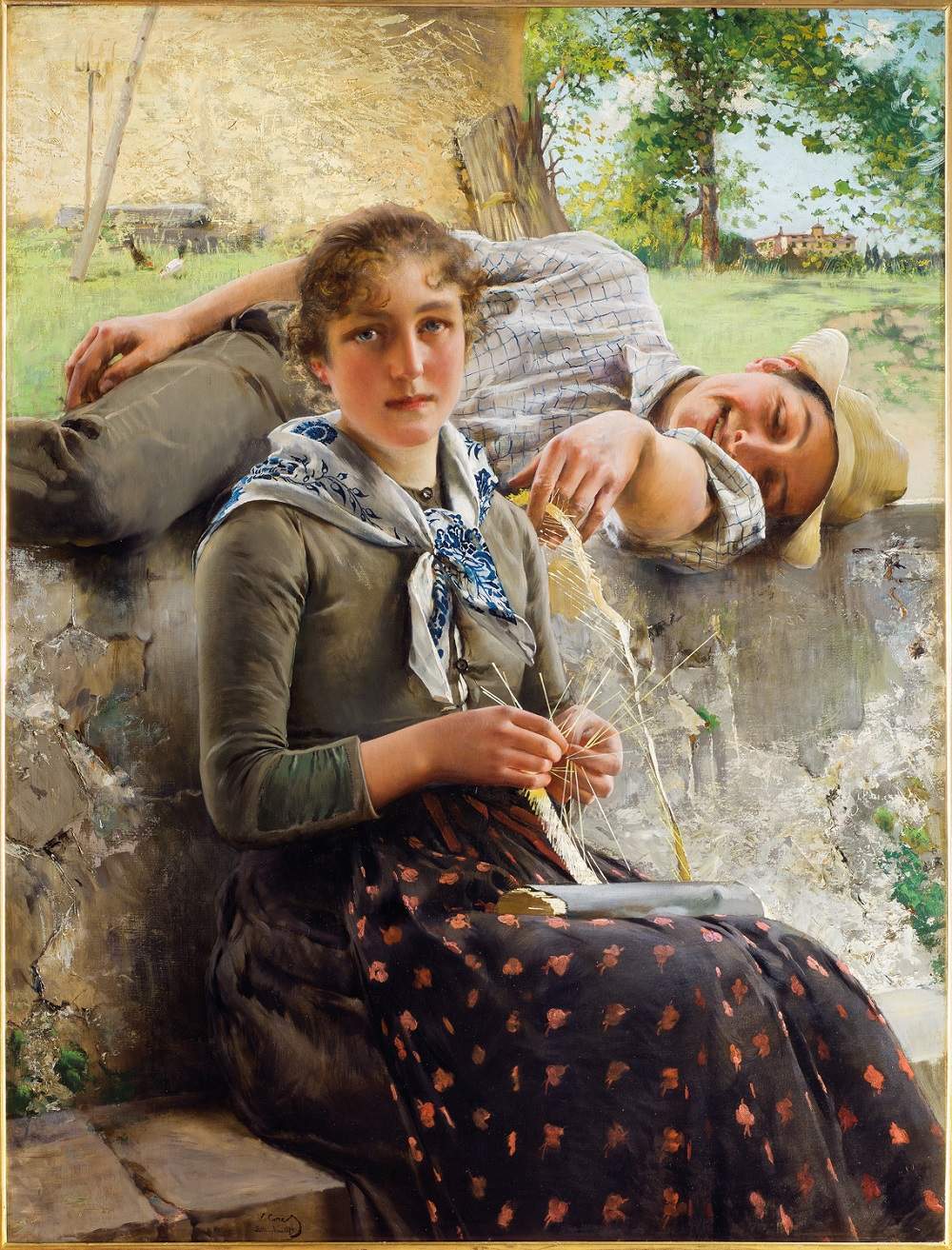From March 7 to May 26, 2019, the Uffizi Galleries celebrates women with an exhibition at the Pitti Palace that chronicles the commitment and talent of women between the 19th and 20th centuries. The exhibition, titled Feminine Lexicon. Women Between Commitment and Talent 1861 - 1926, opens with two specific events: the enrollment of some women workers in the Fratellanza Artigiana in 1861, and the Nobel Prize awarded to Grazia Deledda in 1926 for her novel Canne al Vento. Two symbolic dates that mark the history of a redemption of the female image and the public role of women in the post-unification period. Works of art, photographs and objects (seventy in all) illustrate the different forms of industriousness of the female universe, describing often unrecognized energies and resources. Peasant women, for example, devoted to agricultural practices connected to the cycle of the seasons also had to care for the animals on the farm. And in moments of rest from the hardest work, they mended, knitted or wove straw, as can be seen in numerous paintings by Silvestro Lega on display in the gallery. Other futures awaited middle-class women, who could study and pursue a career in school, become artists and even writers. In the latter case, however, their activities were limited to genres and subjects considered specifically feminine: writing for children or school books, or articles in periodicals for young ladies on the latest fashions, domestic economy, etiquette and manners.
The apparent quiet of the salons often offered cover, however, for revolutionary and patriotic thoughts, and was ground for a fervent intellectual life. During that period, Florence was a favorite destination and meeting place for prominent figures in the female world not only of literature and art, but also of social and political engagement, on an international scale: Elizabeth Barrett Browning, Jessie White Mario, Theodosia Garrow Trollope, Margaret Fuller, among others, lived here.
The exhibition, produced in collaboration with Advancing Women Artists, is developed scenographically around a central core of large-scale works, so that female protagonists emerge as if on a theater stage. The path continues into the collections of the Modern Art Gallery of Palazzo Pitti (where one of the most significant collections on the theme of women’s work in the fields between the 19th and 20th centuries is kept), and flows through a visual thread with captions and focus, as well as a multimedia projection dedicated to women in their working environments. “In the chronological span of just over half a century considered in the exhibition,” says Uffizi Director Eike D. Schmidt, “the conditions for social redemption and for a new autonomy of women mature, no longer solely anchored to the role of angel of the hearth. The works on display tell of a reality in which the women’s question emerged, when engagement in work, political interests, intellectual life and independence were still a privilege, or the result of a struggle. Women had to build their own identity in the social and labor spheres while still maintaining their daily commitment within the home and caring for the family. We wanted to honor the toil always sustained by women by documenting together the variety of ways in which women express themselves and their talents in the fields of art, photography, writing, teaching, politics, and many other areas.”
“Florence,” Linda Falcone, director of Advancing Women Artists, explains instead, “has been a magnet for foreign women artists trying to carve out ’a room of their own’ in salons and ateliers (and, in time, in the academy itself). International women artists are well represented in this exhibition, as foreign women enjoyed a certain level of freedom in Italy, which was not the case in their home countries. Examples include the German symbolist Julia Hoffmann Tedesco, who shared the same interest in the female sphere as her husband, an exponent of the Macchiaioli; the Irish portraitist and poet Louisa Grace Bartolini, a champion for the Italian cause; Mary Egerton Bracken, an English painter of thehigh society who frequented Browning’s entourage at Casa Guidi, and the French Nabis artist Elisabeth Chaplin, the youngest and most prolific artist among those represented in the Uffizi Galleries’ collection.”
The exhibition can be visited during Palazzo Pitti opening hours, with a valid museum ticket. Information is available at www.uffizi.it. The catalog is published by Sillabe in two versions, Italian and English.
Image: Vittorio Corcos, Stella and Piero (oil on canvas; Florence, Gallery of Modern Art, Uffizi Galleries)
 |
| Florence, Pitti Palace recounts 70 years of women's emancipation between the 19th and 20th centuries with Women's Lexicon |
Warning: the translation into English of the original Italian article was created using automatic tools. We undertake to review all articles, but we do not guarantee the total absence of inaccuracies in the translation due to the program. You can find the original by clicking on the ITA button. If you find any mistake,please contact us.